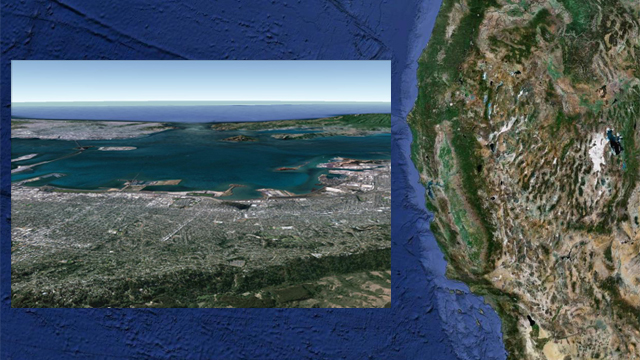
What has a mass of about 6 yottakilograms, occupies a volume of space of about 1 million million cubic-kilometers, is about 40 kilometers fatter than it is tall, and you could walk around it in about one year? Guesses, anyone? Did I mention it's open for business day and night. Still wondering?
If you guessed the planet Venus, close! Very close. It's actually good ol' Earth I've been thinking about lately, as a planet and home. These days, it's quite easy to think of our home world as shrinking, made smaller and smaller every day by modern transportation, telecommunications technology and our unprecedented propensity to make use of them.
My own daughter, long ago when she was an 8-year-old, made an observation on the size and scale of the Earth as we stood atop the Oakland Hills looking down upon most of the San Francisco Bay. "I can see the Bay," she said, pointing downward, "and an astronaut in space can see it, too." The scale of our small planet struck me at that moment in a different way than usual, for she was right. Here was a geographic feature that I could not only see in one sweeping gaze, but I could hop in my car and go visit any point on that feature in under an hour (traffic willing). And, yes, someone way out in space, seeing the Earth in its demi-entirety (‘cause you can only see half a planet at a time) could see it, too, as a major feature on the globe.
From this modern tiny-planet perspective, it's amazing to think of times when much of the planet was unknown to any one group of humans. What is a 5-hour plane ride today, between Europe and the East Coast of the U.S., was a big dark unknown only a few hundred years ago.
But, it doesn't take much to get back a perspective of Earth as a very, very large place. All you have to do is scratch below the surface we dwell on.
